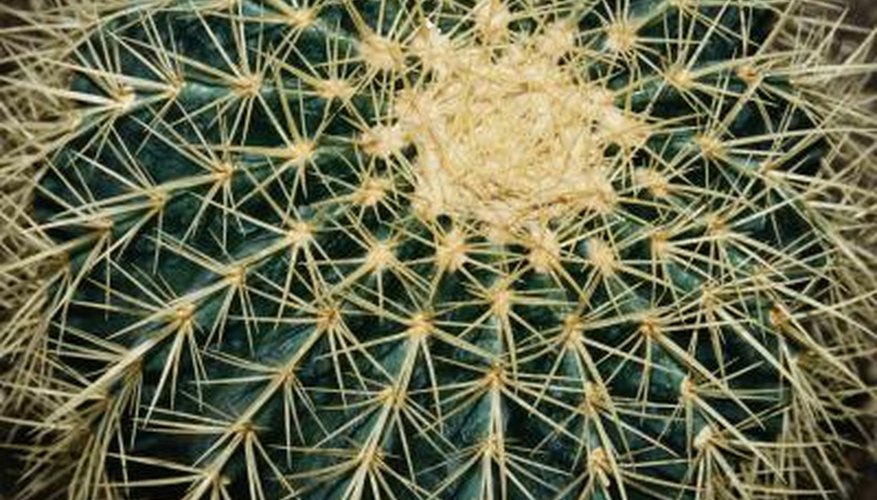Cactus plants make easy-to-maintain additions to the home garden as well as to indoor spaces. From low-growing cacti to taller plants that reach 50 feet tall, these versatile plants grow in a wide variety of colours and forms. White fuzz spots on your cactus plant are likely a sign of a pest infestation. Act fast to protect the cactus from severe damage.
Preventive Care
Provide regular care to cacti to maintain vigorous plants with a greater resistance to pests. Though cactus plants can handle a lot of neglect, they are not immune to continued poor conditions. Grow your cactus in areas, indoors or out, that offer full direct sunlight for optimal development. Maintain extremely well-drained soil conditions. Cactus plants thrive in soil high in organic content; Clemson University recommends applying monthly applications of 5-10-5 fertiliser from June to September. Irrigate cacti as they grow between March and September. Allow the soil to dry between each watering to avoid excessively wet conditions that encourage problems like root rot. Decrease irrigation to once every three weeks during fall and winter as cacti become dormant.
- Provide regular care to cacti to maintain vigorous plants with a greater resistance to pests.
- Allow the soil to dry between each watering to avoid excessively wet conditions that encourage problems like root rot.
Infestations
If you notice white fuzz spots on your cactus plants, they are likely infested with mealybugs. Mealybugs are soft, flightless insects that target plants like cacti. These tiny, slow-moving pests display grey to pink bodies measuring approximately 1/20 to 1/5 inch in length. Targeting succulent plants like cactus and coleus, mealybugs create the appearance of white fuzz on plants because they exhibit a white, cotton-like wax all over their bodies. As they gather, their groups look like clumps of cotton.
- If you notice white fuzz spots on your cactus plants, they are likely infested with mealybugs.
- Targeting succulent plants like cactus and coleus, mealybugs create the appearance of white fuzz on plants because they exhibit a white, cotton-like wax all over their bodies.
Damage
Mealybugs are sucking pests that remove plant sap from tender plant tissue by piercing it with their mouths. As mealybugs feed, they excrete a sticky-sweet substance called honeydew that falls onto plant parts. Honeydew promotes the growth of a secondary problem called sooty mould. This growth is fungal in nature, developing into a black-hued mould that covers plant parts, potentially obstructing sunlight from reaching the cactus. Mealybug feeding leads to stunted growth, wilting, loss of plant colour and decline.
- Mealybugs are sucking pests that remove plant sap from tender plant tissue by piercing it with their mouths.
- As mealybugs feed, they excrete a sticky-sweet substance called honeydew that falls onto plant parts.
Solutions
To control mealybugs on cactus plants, remove and destroy severely affected parts, if possible. Saturate a cotton swab and rub the white fuzz spots off of the plant to kill the mealybugs and manage the infestations. For outdoor growth, release natural enemies such as ladybirds and predatory wasps onto your cacti to kill mealybugs without hurting the cactus. These insects are available at garden supply stores. For severe infestations, apply low-toxicity insecticidal soap or a higher-toxicity insecticide that contains either acephate or bifenthrin.
- To control mealybugs on cactus plants, remove and destroy severely affected parts, if possible.
- Saturate a cotton swab and rub the white fuzz spots off of the plant to kill the mealybugs and manage the infestations.
